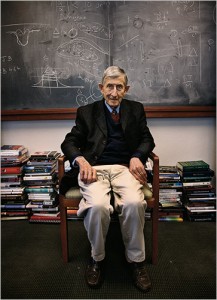 On June 29th, a two-hour gubernatorial forum was held in downtown Boston’s historic Old South Meeting House.
On June 29th, a two-hour gubernatorial forum was held in downtown Boston’s historic Old South Meeting House.
All candidates for Governor were welcomed to make a statement, followed by a short Q&A by the audience and two panelists.
The first candidate to speak, Governor Deval Patrick, spoke about Cape Wind, and addressed a question about the alternative of purchasing clean energy from other places, if it were cheaper than producing our own. In response to this, he unwittingly quoted Chairman Mao, “I don’t know who said it, but, we’re going to have to let a thousand flowers bloom,” and concluded that we’ve still got a long way to go, and no avenue should be left unexplored. Other topics he discussed were the state of parks after cut funding, the Evergreen Solar project and Chapter 40B. The overall theme for the Governor’s discussion was that “we have got a long way to go,” but the place Massachusetts is in now shows important progress.
The first new candidate to speak, Dr. Jill Stein of the Rainbow Green party, discussed passionately–
- The need for transparency in government
- The significance of Environmental Health factors as relate to human health and health costs
- What she would like to change about taxes: She’d like to increase income taxes & reduce sales tax with goal of benefiting the lower & middle income folks who spend a higher percentage of their income on consumption. -But ultimately she would like to move towards a carbon tax.
- Environmental Health issues – open communication of risks including a personal battle- mercury in fish
After Dr. Stein’s enthused and in depth discussion of environmental health and taxes, State Treasurer Tim Cahill took the podium. Mr. Treasurer announced right off the bat his less-detailed knowledge of environmental sciences, and the fact that his main goal was “jobs” and that it would inevitably mean clashing with environmentalists at times. He attempted to stress that he listens to all opinions before making decisions, but if it were environment versus development, he would unquestionably favor development.
Republican candidate Charles Baker had a previous speaking engagement, but he was represented at the event by Senate minority leader Bradley Jones. Mr. Jones was able to clarify that though Mr. Baker may not see that global warming is being caused by anthropogenic activities, he was able to see practicality, economical, and health-related reasons for fighting for cleaner practices.
State primaries will be held September 14, 2010, followed by elections for Governor on November 9, 2010.





 Why the sudden interest in a man now is his mid 80s?
Why the sudden interest in a man now is his mid 80s?